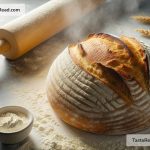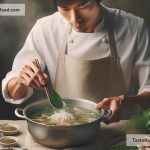Finding the Flavor Harmony: My Journey in the Kitchen
For many aspiring home chefs, mastering the art of balance in cooking can be a bit like trying to find your way through a labyrinth — filled with turns, surprises, and, sometimes, disappointments. But when the pieces fall into place, the result is a dish that sings with harmony and complexity, rewarding your taste buds for the journey. My personal journey to find this balance has been filled with trials, errors, and, most importantly, valuable lessons.
Starting Out
My journey into the world of cooking began with a simple love for eating and a desire to replicate the flavors I experienced in restaurants and from meals made by family members who seemed to have a magical touch in the kitchen. Like many beginners, my early attempts were hit or miss. Sometimes, the dishes came out too salty, too bland, or just plain odd. I quickly realized that successful cooking was not just about following a recipe to the letter but understanding how to balance and adjust flavors to achieve a harmonious outcome.
The Eureka Moment
The turning point came when I understood that balancing flavors is not about adding more and more ingredients hoping one will correct the others. It’s about understanding the fundamental tastes: sweet, sour, salty, bitter, and umami, and knowing how they interact with each other and with our taste buds. This revelation was akin to being handed a map in my previously mentioned labyrinth — I now had a guide to direct my experiments.
The Taste Test Approach
I decided to adopt a more methodical approach to my cooking. Instead of blindly following recipes, I began to taste my dishes frequently as I cooked, adjusting the flavors step by step. This “taste test” approach forced me to really focus on what was happening in the pot or pan and consider the balance of flavors. Through this process, I also became more comfortable with the idea that sometimes a dish needed an unexpected ingredient (like a pinch of sugar in a tomato sauce or a dash of vinegar in a stew) to truly shine.
The Role of Freshness and Quality
Another critical lesson I learned is that the quality and freshness of ingredients have a profound impact on the flavors of a dish. Fresh herbs, for example, can add a brightness and depth that dried herbs simply cannot match. Similarly, the quality of olive oil or vinegar can elevate a salad from good to extraordinary. This realization pushed me to be more thoughtful about the ingredients I was using and to invest in quality where it really mattered.
Experimentation and Notes
A large part of learning to balance flavors has been allowing myself the freedom to experiment. Yes, there have been some notable failures along the way (a particularly memorable overly-bitter chocolate cake comes to mind), but each mistake was a lesson in disguise. I began keeping a notebook in the kitchen to jot down what worked and what didn’t, and over time, this notebook became a treasure trove of personalized cooking wisdom.
Seeking Inspiration and Education
I also looked beyond my own kitchen for inspiration and education. Cooking shows, cookbooks, and even dining out became opportunities to learn and discover. I would often try to deconstruct dishes that I enjoyed, thinking about the balance of flavors and how I could replicate something similar at home. This process of continuous learning and curiosity has been pivotal in honing my skills.
Sharing and Feedback
Sharing my creations with family and friends has been another crucial aspect of my journey. The feedback, both positive and constructive, helped me fine-tune my understanding of what works and what doesn’t. Sometimes, a fresh perspective would offer insights that I was too close to see.
The Culinary Journey Continues
Learning to balance flavors has transformed my cooking from a mechanical process of following recipes to an intuitive and creative practice. I’ve learned that balance in flavor, much like in life, is about harmony and adjustment. It’s about understanding the elements at play and knowing when to add a pinch of creativity or restraint. My journey in the kitchen is ongoing, with each meal offering a new opportunity to explore and grow. As with any art, the joy is as much in the process as in the outcome.
To anyone starting their own journey in the kitchen, remember that every great chef was once a beginner, and the path to mastery is paved with trial, error, and, most importantly, a passion for the craft. So, embrace the adventure, and who knows? You might just discover your own unique flavor along the way.


